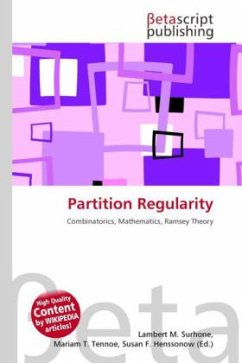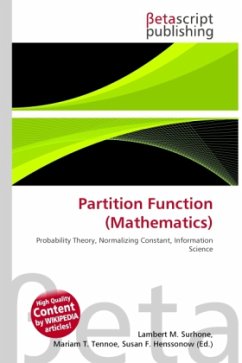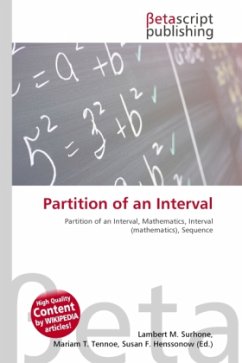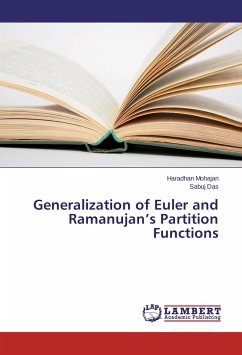
Partition of a Set
Versandkostenfrei!
Versandfertig in 6-10 Tagen
23,99 €
inkl. MwSt.

PAYBACK Punkte
12 °P sammeln!
Please note that the content of this book primarily consists of articles available from Wikipedia or other free sources online. In mathematics, a partition of a set X is a division of X into non-overlapping and non-empty "parts" or "blocks" or "cells" that cover all of X. More formally, these "cells" are both collectively exhaustive and mutually exclusive with respect to the set being partitioned.This finer-than relation on the set of partitions of X is a partial order (so the notation " " is appropriate); it is a complete lattice. For the simple example of X = {1, 2, 3, 4}, the partition latt...
Please note that the content of this book primarily consists of articles available from Wikipedia or other free sources online. In mathematics, a partition of a set X is a division of X into non-overlapping and non-empty "parts" or "blocks" or "cells" that cover all of X. More formally, these "cells" are both collectively exhaustive and mutually exclusive with respect to the set being partitioned.This finer-than relation on the set of partitions of X is a partial order (so the notation " " is appropriate); it is a complete lattice. For the simple example of X = {1, 2, 3, 4}, the partition lattice has 15 elements and is depicted in the following Hasse diagram. The equivalence relation matrices below denote the single partitions. If all red fields (binary ones) of one matrix lay within the red fields of a second matrix, this partition is a refinement of the second.












